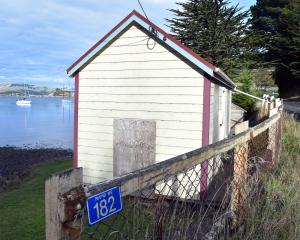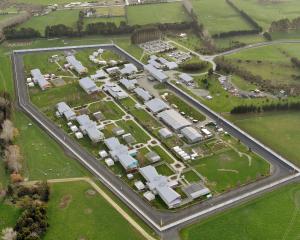People who host wind turbines on their properties and derive rental income from wind energy companies have important stories to tell about living alongside turbines, but they've largely been absent from the debate on wind farms and health.
Australian film-maker and researcher Neil Barrett is finally giving this critical group a voice in his new short film, The Way the Wind Blows, released this week. In Mr Barrett's short film, 15 hosts and some of their neighbours from the central Victorian district near the town of Waubra tell what it's like to live surrounded by large turbines.
Turbine hosts at Waubra earn $A8000 ($NZ9095) a year for each turbine on their land. In the bush, the expression that wind farms can ''drought-proof a farm'' is common: a landowner with 10 turbines can wake up each morning comfortable in the thought that a tough year with poor rain or bad frosts can be ridden out, thanks to income from wind generation.
All of Mr Barrett's interviewees say they can hear the turbines but none say they are bothered by them or suffer from any health problems they attribute to the turbines. If there is such a phenomenon as ''wind turbine syndrome'' it would seem it is a condition that, remarkably, can be prevented by the wonder drug called money.
Significantly, too, none of those interviewed say their contracts prevent them from speaking publicly about their experiences with hosting turbines, repudiating the mantra of wind farm opponents that suffering hosts are gagged from speaking out by evil wind companies.
In 2010, a small group comprising mostly wealthy landowners established the Waubra Foundation, which opposes wind farms being established near their country estates. None of the directors of the foundation nor its chief executive, former GP Sarah Laurie, live within 125km of Waubra, yet took on the name of the town to highlight what they believe are serious health problems associated with living near wind turbines.
Mr Barrett's film reveals the deep resentment that Waubra residents feel about these out-of-towners hijacking their town's good name. None say that Dr Laurie has ever contacted them. She and the Waubra Foundation have done all they can to spread concern about the harms they allege are caused by living near wind farms. One former Waubra resident has been particularly prominent, speaking emotionally at anti-wind farm meetings about how wind farms have ruined his health and caused his family to move to Ballarat, at great personal expense.
In a statement that would be of immense interest to Apple, Samsung and Nokia, he recently told a meeting in Barringhup that electricity generated by wind turbines started charging his cellphone without it being plugged in. The most common health complaints voiced by complainants are problems such as disturbed sleep, anxiety, hypertension and normal problems of ageing that are very prevalent in all communities, regardless of whether they have wind farms or not.
In a 2012 Ontario legal case, complainants were asked to provide medical records going back a decade before the local wind farm started operation. This would have provided relevant information about pre-existing health problems. When they failed to do so, their case failed.
In a peer-reviewed paper of mine to be published shortly, I conducted a historical audit of all known health and noise complaints made about Australia's 51 wind farms from 1993 to 2012. Using four sources (wind company records, submissions made to three parliamentary inquiries, local media monitoring records and court affidavits) I calculated the number of complainants around Australia.
More than two-thirds of Australian wind farms, including more than half of those with large turbines, have never received a single complaint. Two states - Western Australia and Tasmania - have seen no complaints.
Of the 129 individuals across Australia who have complained, 94 (73%) are residents near just six wind farms which have been targeted by anti-wind farm groups.
Almost all (98%) of complainants made their first complaint after 2009 when anti-wind farm groups began to add health concerns to their wider opposition. In the preceding years, health or noise complaints were rare despite large and small-turbine wind farms having operated for many years.
In late 2012, anti-wind farm campaigners launched an anonymous website, Stop These Things. The apparently well-funded site specialises in emotive videos of wind farm victims, but in nine months has run profiles of only 18 mostly aged complainants. Anti-wind farm activists have promoted a bizarre and ever-growing number of health problems associated with turbine exposure. My favourite is the alarming problem of disoriented echidnas.
Among Dr Laurie's more interesting claims is that wind turbines cause lips to vibrate at up to 10km, and that within 1km to 2km of wind turbines, air pressure changes occur ''sufficient to knock them off their feet or bring some men to their knees when out working in their paddock'' and ''have been reported by farmers to perceptibly rock stationary cars''.
Dr Laurie has repeatedly claimed that ''a large number'' or ''over 20 families'' and most recently ''more than 40'' families are ''wind farm refugees'', who have had to abandon their homes. But Dr Laurie has declined requests to make her list public.
Another prominent activist, George Papadopolous, claims to be able to sense a wind turbine at 100km away. Mr Barrett's film brings a fresh and important perspective to a debate that has so far been dominated by a small number of complainants and those oxygenating their fears.
Fifteen years ago, Australian news media ran countless stories on community fears about cellphone towers. Those still worrying about health risks from the towers are rare today. Wind turbine syndrome is likely to go the same way. - theconversation.com/au
- Simon Chapman, professor of public health at the University of Sydney, wrote this article for The Conversation website, a collaboration of editors and academics to provide evidence-based analysis, research and news.











